Return to top of page
Justis FAQ – JavaScript
The Justis service is designed for use with recent versions of the Internet Explorer and Firefox web browsers. JavaScript support must be enabled in order to use the service, but JavaScript is not required for viewing the other parts of the Justis website.
Enabling JavaScript in Internet Explorer 7
- Open the “Tools” menu.
- Select “Internet Options”, to open the Internet Options dialog box.
- Click the “Security” tab.
- Click the “Internet” symbol (a globe).
- Click the “Custom Level…” button, to open the Security Settings dialog box.
- In the Settings list, scroll down to “Scripting”.
- Under Active Scripting, click the radio button to the left of “Enable”, so that a coloured dot appears in it.
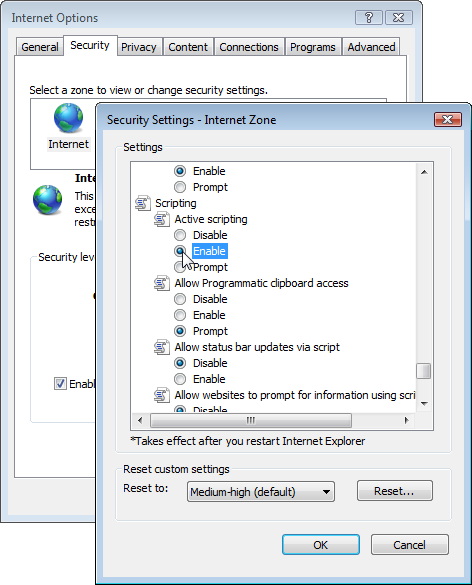
- (If you are unsure about the other Security Settings, please check with your Network Administrator.)
- Click “OK” to close the Security Settings dialog box.
- Click “Yes” in the Warning! message box.
- Click “OK” to close the Internet Options dialog box.
Enabling JavaScript in Internet Explorer 6
- Open the “Tools” menu.
- Select “Internet Options…”, to open the Internet Options dialog box.
- Click the “Security” tab.
- Click the “Internet” symbol (a globe).
- Click the “Custom Level…” button, to open the Security Settings dialog box.
- In the Settings list, scroll down to “Scripting”.
- Under Active Scripting, click “Enable”, so that a dot appears next to it.
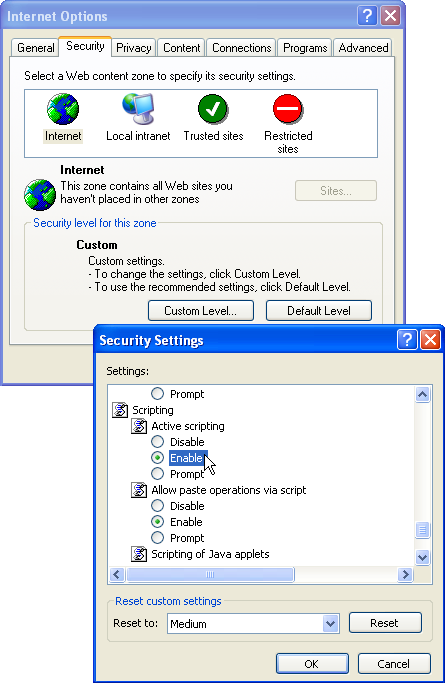
- (If you are unsure about the other Security Settings, please check with your Network Administrator.)
- Click “OK” to close the Security Settings dialog box.
- Click “Yes” in the Warning! message box.
- Click “OK” to close the Internet Options dialog box.
Enabling JavaScript in Firefox (Windows or Mac)
- Open the “Tools” menu.
- Select “Options…”, to open the Options dialog box.
- In the row of coloured icons at the top, click “Content”.
- Click the check box to the left of “Enable JavaScript” so that a tick appears.
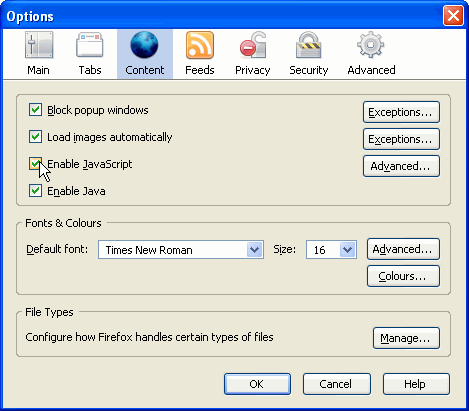
- Click “OK” to close the Options dialog box.
If you are using Mac OS X, then you need to select Preferences… on the Firefox menu, instead of Options… on the Tools menu.
Enabling JavaScript in SeaMonkey (Windows or Mac)
- Open the “Edit” menu.
- Select “Preferences…”, to open the Preferences dialog box.
- In the Category list, click the triangle next to “Advanced” so that it points downwards.
- In the list of items beneath Advanced, click “Scripts & Plugins”.
- To the right of the list, beneath Enable JavaScript for, click “Navigator” so that a tick appears.
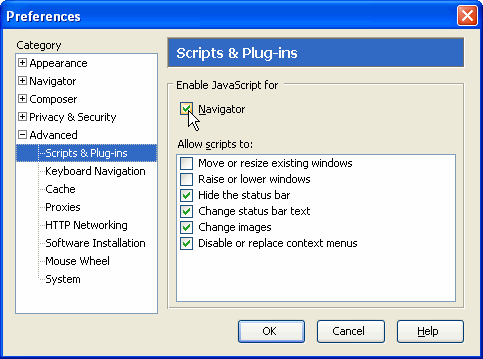
- Click “OK” to close the Preferences dialog box.
If you are using Mac OS X, then you need to select Preferences… on the SeaMonkey menu, instead of on the Tools menu.
Enabling JavaScript in Camino
- Open the “Camino” menu.
- Select “Preferences…” to open a dialog box.
- Select “Web Features”.
- In the Content Control section, click “Enable JavaScript” so that a tick appears.
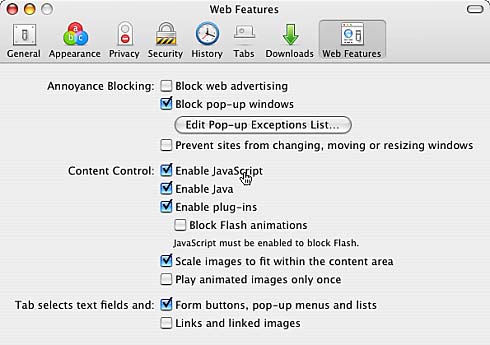
- Click the red dot at the top left to close the Preferences dialog box.
12th November 2007
